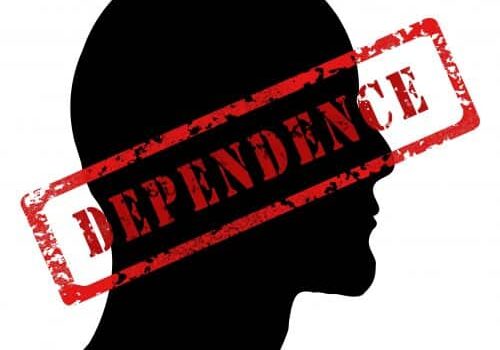What Are The 5 Sentencing Objectives That Justify Criminal Punishment?
We get hit, and we hit back. It is a primal instinctual reaction. It is a fundamental part of being human. Yet, what does that reaction signify? Most likely, we don’t think deeply about it. Indeed, in the moment, the reaction is sudden, immediate, and done without contemplation.
Sentencing Objectives Built Into Our Instinct of Self Defense
Allow me to venture a guess, however, that the instinct to “hit back” comes from a certain set of instinctual needs that get processed almost immediately in the human brain. Those needs include the need to show the attacking individual:
- If he does something you don’t like, then you will do something he doesn’t like;
- There are consequences for certain behavior, and that hitting someone will be met with an
 unpleasant reaction;
unpleasant reaction; - The reaction of “hitting back” will stop the person from his attack, at least temporarily;
- He may choose never to hit someone again without provocation because of your reaction; and
- He may choose to even apologize for his unprovoked attack because of your reaction.
Roughly speaking, those five instinctual “needs” are analogous to the way we discipline children. Children misbehave, and what do we do? We stop the behavior by sending the child to his room, taking away certain toys, and showing that bad behavior will be met with consequences the child does not like. Hopefully, the child will remember the consequences and choose not to behave in the same way in the future. In some cases, you may even have your child use their allowance to pay for something that may have been broken as a result of the bad behavior.
The 5 Sentencing Objectives
Taken together, those principles – of instinctual reaction or discipline – translate easily into the 5 sentencing objectives our society relies upon when punishing those who break the law. Indeed, in the same way we keep our home civilized through the appropriate discipline of children, our communities remain civilized through appropriate criminal punishments. Accordingly, those five sentencing objectives are:
- Retribution. Victims and their families are injured, either physically or emotionally, by a crime. Just in the same way we instinctually want to “hit back,” the criminal justice system uses sentencing as a way to “hit” a criminal back. While the punishment may not match the crime committed, it is punishment (i.e., retribution) nonetheless. As noted above, committing a crime will be met with the state doing something the criminal does not like – typically in the form of taking away freedom, or ordering stiff monetary penalties.
- Deterrence. Another objective is both general and specific deterrence. Providing punishment for a crime demonstrates to the public generally that there are consequences for committing a crime. That puts the public on notice of what the boundaries of appropriate behavior are in society. In addition, the opposite side of the same deterrence coin is to send a message to the individual criminal that there are consequences for breaking the law. The hope is that the individual will choose not to commit a crime in the future as a result of his punishment.
- Incapacitation. Our criminal laws and the criminal justice system are meant to protect the public, to keep society civilized. Thus, another sentencing objective must be to protect the public if necessary through sentencing. As such, if a person commits a crime that demonstrates to society that the person cannot be trusted to behave appropriately or cannot control their actions sufficiently, then a person can be taken out of society, or incapacitated, for a period of time or permanently. The ultimate form of removing a person from society is the death penalty. A sentence of life imprisonment, however, is becoming the more favored approach in virtually all industrialized nations.
- Rehabilitation. Those who have the “put ‘em in jail, and throw away the key” mentality often forget about this important sentencing objective. In fact, many participants in the criminal justice system forget about this sentencing objective as well. It should not be forgotten that many people can change, if given the chance and the right circumstances. Accordingly, sentencing a person should be done with an eye towards helping him turn his life around if that is possible. These days it is becoming clear that America’s experiment with mass incarceration is a complete failure. Hopefully, rehabilitation will truly become a viable sentencing objective again, and people will be allowed to turn their lives around and rejoin society as productive citizens.
- Restitution. In addition to punishing the criminal, another sentencing objective is making the victim whole, to the extent possible. Restitution can come in the form of restoring or repairing any damage inflicted on the victim, i.e., bringing the victim back, as much as possible, to his or her pre-crime status. With some crimes, such as theft or burglary, restitution is relatively easy. The criminal can be ordered to pay back the victim, or fix the broken window. With other crimes, of course, it may be impossible to make the victim whole. In those tragic cases, perhaps the punishment itself will bring some restorative justice to a victim’s, or the victim’s family’s, emotional state.
As you can see, the 5 stated sentencing objectives above match up quite neatly with those 5 instinctual “needs” that are satisfied by hitting back when we get hit. Society is a reflection of human nature, and social rules on punishment directly flow from the instinctual rules we already have built into us as humans.
Recommended for you
Amendment 782 Motion Reconsideration
Reinaldo Rivera moved for 18 U.S.C. § 3582(c)(2) relief based on Amendment 782 to the Guidelines, commonly known as “drugs minus 2.” The district court granted the motion and reduced his sentence to 420 months from LIFE. But in doing so, the district court believed Rivera’s mandatory minimum was 30 years for his CCE conviction.…
Drug Treatment And Vocational Training Improper Sentencing Considerations
Christopher Thornton moved for a downward variance at sentencing arguing, among other things, that “in-prison treatment during the proposed thirty-eight months would help mitigate any potential risk he posed to the community.” The district court denied the motion, but in doing so said that Thornton had “mental-health issues, and he needs drug treatment” and that…




